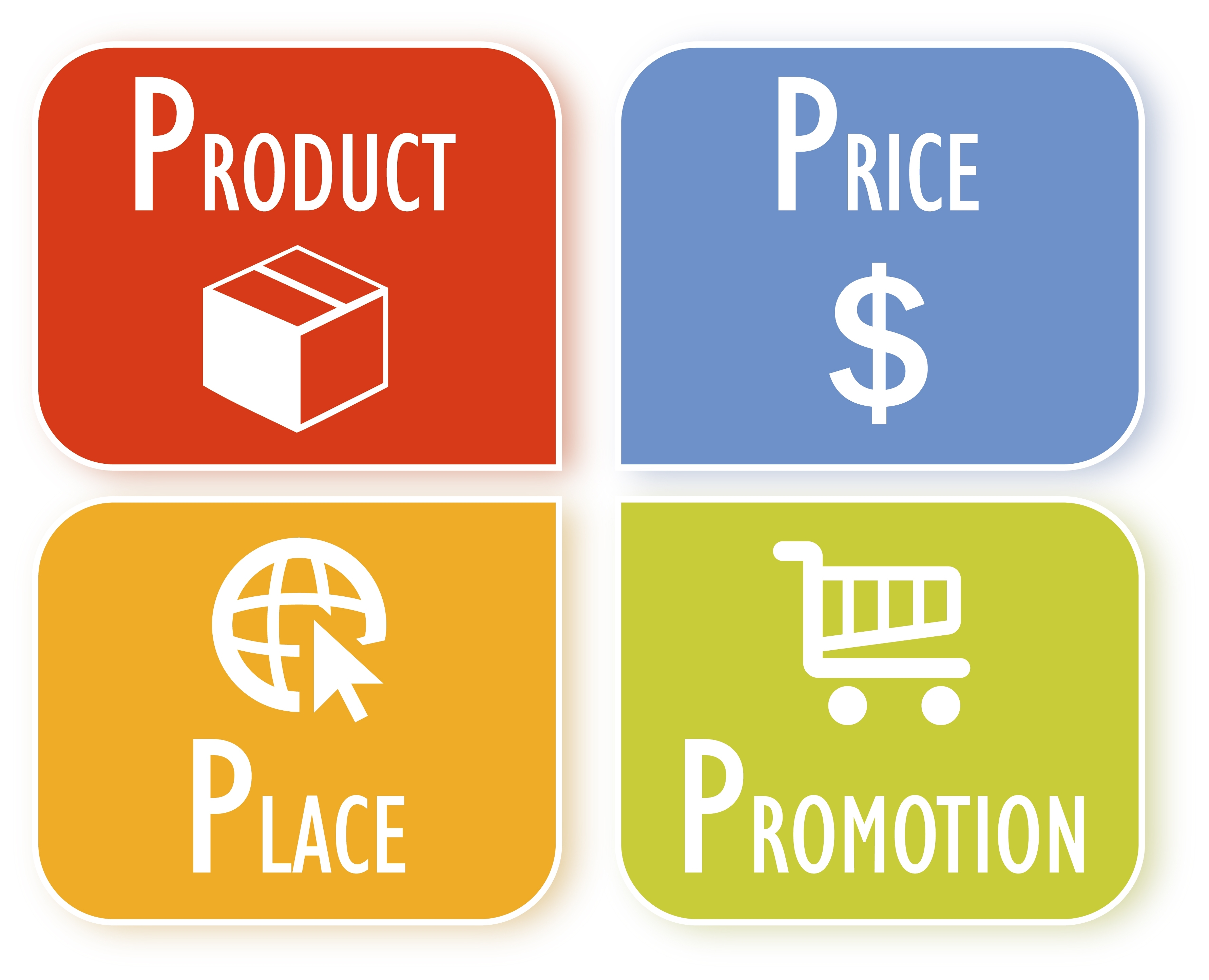The marketing mix is one of the fundamental components of a brand's marketing strategy, consisting of four main elements that a business uses to offer its product or service to its target audience: Product, Price, Place, and Promotion. These four components complement each other and help businesses increase market share, reach the target audience, and build customer loyalty.

Marketing Mix (ShutterStock)
1. Product
The product is the good or service that a business offers to its consumers and is the most important element of the marketing mix. A product is designed to meet the needs and wants of customers, aiming to make their lives easier or create value.
Key Components of a Product:
- Functional Features:The basic functionality of the product. For example, the ability of a smartphone to make calls and use the internet.
- Design and Quality:The product's appearance, aesthetic design, materials used, and durability.
- Brand:The identity of the product, representing the perceived value and trust associated with it.
- Packaging:The external appearance of the product, which not only protects it but also reflects the brand's image and influences the consumer's purchase decision.
- Warranty and After-Sales Services:The support and guarantee offered after the product is purchased.
Product Strategies:
- Product Development:Designing new products or improving existing ones.
- Product Diversification:Offering a wider range of products to meet the diverse needs of the target market.
- Market Positioning:Positioning the product in a way that aligns with the target market's perception and needs.
2. Price
Price refers to the amount of money a consumer must pay to obtain a product or service. Pricing is the second element of the marketing mix and directly affects both the profitability of the business and the demand for the product. The pricing process is based on various factors, and balancing these factors is crucial for success.
Pricing Strategies
- Cost-Based Pricing:The price is determined based on production costs and the desired profit margin.
- Demand-Based Pricing:The price is set according to the perceived value and demand for the product.
- Competitive Pricing:The price is based on competitors’ pricing strategies. This strategy is often used in highly competitive markets.
- Psychological Pricing:A pricing tactic that influences consumer perception, such as pricing something at $9.99 instead of $10 to make it seem cheaper.
- Penetration Pricing:Offering a product at a low price initially to gain market share quickly, then gradually increasing the price.
- Price Skimming:Launching a product at a high price and gradually lowering it as demand decreases. This strategy is often used for innovative products.
Effect of Price
Price can significantly influence consumer behavior. Consumers may gravitate toward lower-priced products, while high-priced products might convey quality and prestige. Additionally, pricing strategies define the market position of the product and affect its perceived value.
3. Place
Place refers to the channels and distribution network that deliver the product to the consumer. These elements determine where and how the product will be made available to the target audience. The place strategy directly impacts the accessibility of the product and provides convenience for consumers.
Distribution Channels
- Direct Distribution:The product is delivered directly from the manufacturer to the consumer. Examples include brand-owned stores or websites.
- Indirect Distribution:The product is delivered to the consumer through intermediaries, such as wholesalers and retailers.
- Multi-Channel Distribution:The product is available through multiple channels, ensuring access across various platforms.
Place Strategies
- Intensive Distribution: The product is made available everywhere to reach a broad audience. For example, consumer goods that are sold in supermarkets.
- Selective Distribution: The product is sold through a limited number of retailers or outlets. Luxury brands often use this strategy.
- Exclusive Distribution: The product is available only at specific locations or through exclusive outlets. This is often used for limited-edition products.
4. Promotion
Promotion refers to the communication activities a brand uses to inform, persuade, and remind its target audience about its products or services. This element is focused on increasing awareness, conveying the product's value proposition, and boosting sales.
Promotional Tools
- Advertising:The promotion of the brand through mass media such as television, radio, print, and digital platforms.
- Public Relations (PR):Activities such as press releases, media interviews, and events to enhance the brand's image.
- Sales Promotions:Short-term incentives like discounts, coupons, free samples, or contests to stimulate sales.
- Personal Selling:Face-to-face interactions aimed at making a sale, often in retail or direct sales contexts.
- Digital Marketing and Social Media:Using online platforms, search engine optimization (SEO), content marketing, and influencer marketing to reach consumers.
Promotion Strategies
- Discounts and Offers: Using short-term promotions like price reductions to stimulate consumer purchasing behavior.
- Storytelling: Creating an emotional connection with consumers by sharing a brand’s story, values, or mission.
- Events and Sponsorships: Engaging with consumers directly through sponsored events or activities to increase brand visibility.

